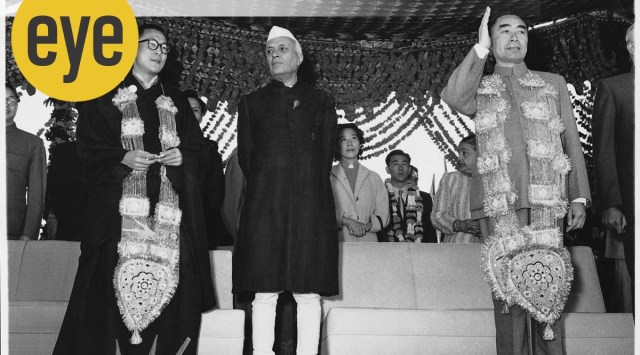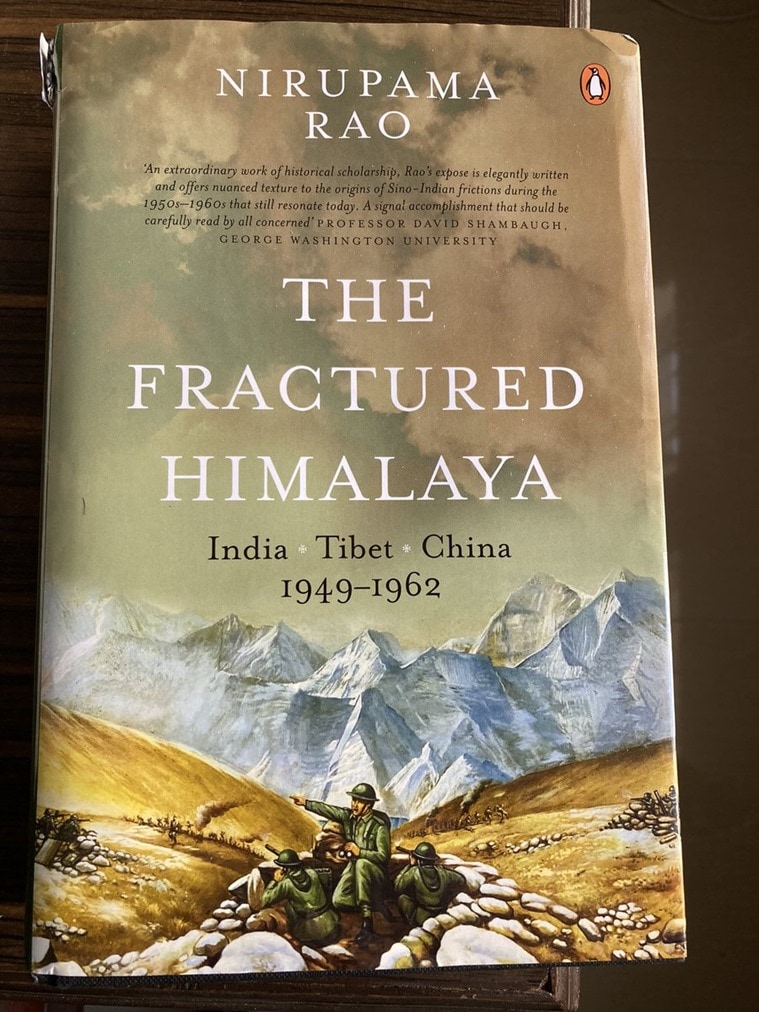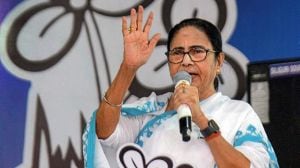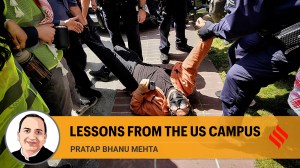- India
- International
Nirupama Rao’s latest book, The Fractured Himalaya, is a lucid account of Sino-Indian relations
Nirupama Rao’s latest book, The Fractured Himalaya, is a lucid account of Sino-Indian relations
 The Dalai Lama, Jawaharlal Nehru and Zhou Enlai in 1956 in India (Source: Homai Vyarawalla; Wikimedia Commons)
The Dalai Lama, Jawaharlal Nehru and Zhou Enlai in 1956 in India (Source: Homai Vyarawalla; Wikimedia Commons)That the Indian diplomatic corps is full of writing talent is well known. Over the decades, we have seen some fine writing, in both fiction and non-fiction, ranging from poetry to the reinterpretation of the epics, and contemporary foreign policy to diplomatic memoirs.
A lot of the recent writing deals with China. Four recent books from former ambassadors to China address the problems with India’s most challenging relationship—Shivshankar Menon’s India and Asian Geopolitics (2021, Penguin RandomHouse), Subrahmanyam Jaishankar’s The India Way (2020, HarperCollins), Vijay Gokhale’s The Long Game (2021, PenguinRandomHouse), and Gautam Bambawale’s Rising to the China Challenge (2021, Rupa Publications).
Now Nirupama Rao, who also served as Indian ambassador to China, has published The Fractured Himalaya. Like her colleagues from the Indian Foreign Service, Rao has spent much time wrestling with the China question during her diplomatic career.
The Fractured Himalaya could well become the classic text on the early years of India’s China relationship. Rao does great service by going back to the origins of the problem in the middle of the 20th century, when independent India began its encounter with Communist China. The history of this troubled 13 years between India and China have been told by many others. But Rao makes it a lot easier to understand.
Despite China’s great importance for India right since independence, the political nature and the diplomatic mechanics of the relationship have largely remained opaque. Even the keenest students of international affairs struggle to cope with its complex history and the dense negotiating record. Rao unpacks the turbulent relationship by combining her deep knowledge as a China hand in the Foreign Office with expansive research to tell us the story of how and why things went wrong during 1949-62.

You would think 600 pages of diplomatic history would be hard to navigate. But in Rao’s telling, the unfortunate tale of Sino-Indian relations becomes fascinating. Her success lies in treating the vaulting ambition and wrenching failure of Sino-Indian relations with great empathy and nuance. Rao has always been known, to those who covered Indian diplomacy, for her felicity with words. Her lucidity and eloquence, in full flow here, make the book a rewarding read.
 The Fractured Himalaya by Nirupama Rao; Penguin Viking; Rs 799; Pages: 999
The Fractured Himalaya by Nirupama Rao; Penguin Viking; Rs 799; Pages: 999
India’s first prime minister Jawaharlal Nehru is the natural protagonist of the book. Rao refuses to fall into the familiar divide between those who deride Nehru as the villain of the piece or a victim of Chinese betrayal. Calling Nehru’s China policy “flawed” but “in a heroic sense”, Rao examines Nehru’s errors of omission — including the one to accept China’s rule over Tibet without clinching a boundary settlement — and his errors of commission — especially the unilateral definition of India’s China boundary. Rao succeeds in humanising the story of this failure, undoubtedly one of modern India’s greatest political debacles.
She devotes great attention to the euphoric context that set the stage for Nehruvian tragedy — the thrilling post-colonial moment, the attendant sense of Asian solidarity, and the self-belief in the possibilities of constructing a post-Western global order.
Rao examines a range of factors that had contributed to the tragedy — structural tension between divergent political systems, the vastly different historical experiences that shaped the Indian and Chinese leadership, the geopolitical consequences of the Partition, and the Cold War.
She draws a sharp contrast between the Chinese premier Zhou Enlai who came across as the “practitioner of the practical, devoid of sentiment or misplaced idealism” and Nehru’s “utopian ‘vision’ for India and China that sought to bridge vast divergences in history, ideology and national character”.
Unlike most accounts of the Sino-Indian relationship, Rao does not treat Tibet as a mere pawn in the great game between Delhi and Beijing. Rao’s sensitivity to Tibet and the contested frontier in the north brings us to the title of the book, “The Fractured Himalaya”. The Indo-Tibetan people along and across the Great Himalayas are the liminal link between the Indic and Sinic civilisations, but have suffered the most from the geopolitics of Sino-Indian border dispute.
Rao’s superb account of the first decade of Sino-Indian relations whets the appetite for more. Perhaps in her next book, she could take a deep dive into India’s China policy after the
Cold War. In my view at least, Delhi repeated many of the errors of the Nehruvian era.
This is not an assessment that Rao and her cohort of China hands at the Foreign Office would agree with. But there are important questions from this period that merit deeper attention of practitioners and scholars, given the depressing state of Sino-Indian relations today.
Did Delhi once again overestimate the possibilities for a partnership with Beijing and underestimate the potential threats? Did India’s grandiose quest for a multipolar world in partnership with China, let Delhi overlook the ticking time-bombs at the bilateral level?
Rao recalls Nehru’s warning after 1962 — “there is no non-alignment when it comes to China”. What, then, pushed Delhi towards variants of non-alignment between Beijing and Washington in the 1990s and beyond? This time, though, Nehru is not around to take all the blame. It was an era in which all the major political parties had a shot at governing India. Is there something deeper in the Indian strategic culture then that prevented Delhi from a hard-headed approach to Beijing?
Rao was deeply involved in making India’s China policy in the last three decades. She is well placed to tell us the story of Delhi’s genuine effort to reconstruct the relationship with Beijing, resolve the boundary dispute and build a productive partnership. She could help us figure out why we find ourselves today in a far deeper crisis with China than in 1962.
(The writer is director, Institute of South Asian Studies, National University of Singapore and a contributing editor on international affairs for The Indian Express)
Must Read
Apr 27: Latest News
- 01
- 02
- 03
- 04
- 05








































